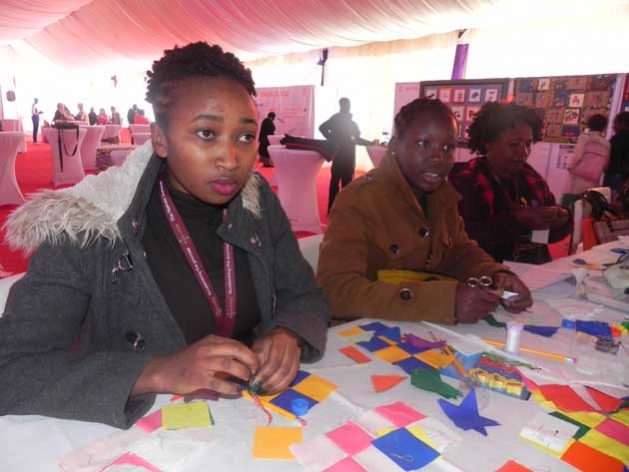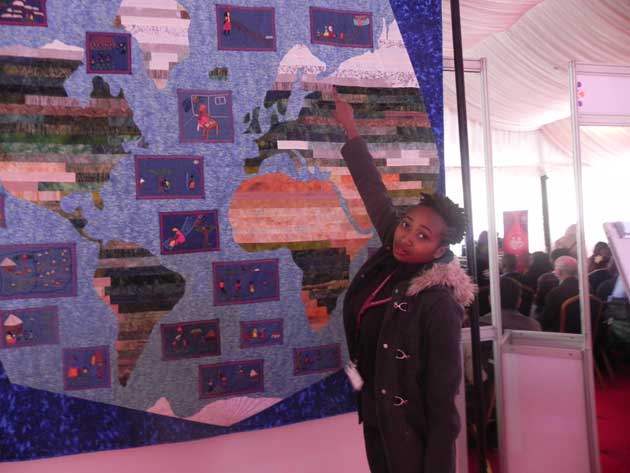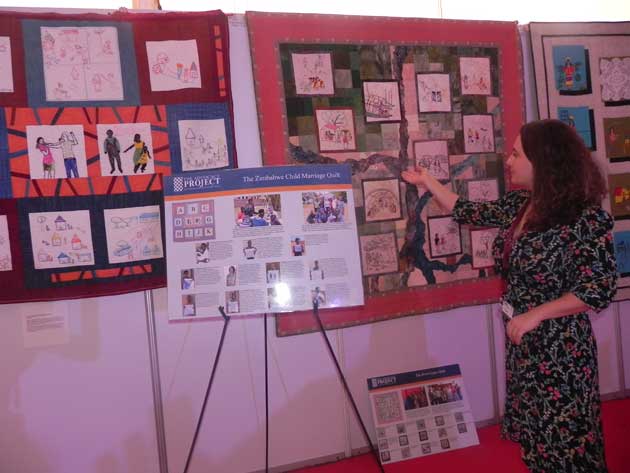
Arts, Civil Society, Global, Headlines, Health

The members of Megative, with Gus van Go (far left).
Credit: Daviston Jeffers
– Even as their income dries up and their touring opportunities disappear because of the Covid-19 pandemic, some artists are using their work to call out injustice, criticize inept leaders and spark social change.
The members of Megative – a Brooklyn-based, reggae-dub-punk collective – are among those aiming to fight negative global currents, and they’re doing so through edgy, scorching music.
“I think activism is the most important thing we have right now in 2020. It’s do or die right now for humanity. The injustice absolutely must end, and it will not end with silence,” says music producer Gus van Go, leader and co-founder of the group.
In a year of uncertainty and division, Megative stands out for its multicultural composition as well as its fusion of styles and thought-provoking lyrics. This past July, watching the incompetence of certain heads of state in the face of the pandemic, the group released the song The Lunatics Have Taken Over the Asylum, a cover of the Fun Boy Three hit from the early Eighties, combining dub and punk music.
The original was a critique of the Ronald Reagan-Margaret Thatcher era, and Megative thinks the track is just as pertinent in 2020, with the current presence of problematic leaders on both sides of the Atlantic.
“We still believe the message is important, and it’s almost more relevant now,” van Go told SWAN in a telephone interview from Montréal, Canada, where he grew up, and where he has a studio along with one in Brooklyn.
The group was due to take their songs on the road – scheduled to perform at “five or six festivals” in France, for instance – but the pandemic has caused all these events to be cancelled. The musicians now find themselves, like so many other artists, struggling to maintain an income and to keep their overall work going.
“I think Covid-19 is exposing something that I’ve always thought about in the music industry,” said van Go. “So much inequality. We’ve always had this one percent of artists who have been insanely rich … and the rest of us are working our asses off, in order to eke out a living.”
He explained that with the massive decline in album sales over the past decade, musicians had turned to touring in order to “just barely make a living – travelling together in a shitty old van”. But now even that has dried up with the global health crisis.
“Covid has shone this giant light on it,” he added. “The universe took away the one single piece of the pie that the artist still had. All of a sudden, nearly every single musician cannot make a cent. One day, the universe just said ‘no you cant have that’. There is no income for all these artists. You see how dangerous it is to have just one source of income? Do we not need music in this world? What if Covid continues for two or three years, what if this goes on for multiple years?”
He said it’s time for artists to band together and demand change – in their industries, communities and countries. “Megative supports activism,” he declared.
Discussing the origins of the group, van Go said the idea for the collective grew out of an overnight drive from New Mexico to California that he took with fellow musician Tim Fletcher 10 years ago. There were only two CDS available in the car – Combat Rock by The Clash, and More Specials by the 2 Tone and ska revival band The Specials, both English. The sounds got van Go thinking about the “conscious lyrics” and the history of the musical styles and their influences.
“We have a love for Jamaican reggae and dub culture of the early Eighties with bands like Steel Pulse and The Clash. But reggae in North America, where we are from, is associated with vacation spots, coconut trees and irie vibes. We were lamenting the darker reggae of the early Eighties. Our Clash discussion morphed into how a reggae band would look in 2018,” he said.
Back in New York, they invited a producing-engineering duo called Likeminds and Jamaican MC Screechy Dan to join the conversation. The enthusiasm for the project was so strong that they recorded three songs which almost immediately led to a signing with Last Gang Records and the subsequent release of their debut album in summer 2018.
The collective now brings together disparate artists including the Grammy-nominated Likeminds (Chris Soper and Jesse Singer); Jamaican-born singer, MC and dancehall veteran Screechy Dan; singer-guitarist and punk rocker Alex Crow; percussionist-DJ-singer JonnyGo Figure; and the rising Brooklyn drummer Demetrius “Mech” Pass.
All the members have their own individual projects but contribute their respective skills to create the Megative sound – a fusion of UK-style punk, Jamaican dub and reggae, and American hip-hop. The music is a response to today’s world, to everything that’s happening including the “hyper-noise of incessant information”, according to the collective.
The overarching theme is existentialist angst amidst precarious conditions. Tracks such as Have Mercy, Bad Advice and More Time call upon listeners to take control and rely on their own sense of what’s right, with lyrics set against dub beats and a punk vibe, and skilful singing mixed with mindful rapping.
For van Go, born Gustavo Coriandoli in Argentina and raised in Canada, the historical alliance between punk and reggae was central to Megative’s formation. He recalls growing up in Montréal in the late 1980s and early 90s, when the “punk rock movement was taking hold” among the youth.
“The shows had trouble finding venues, so they always tried to rent space … and sometimes that would be at Jamaican community centres. All these punks would be at these shows, but also the Rastafarian community. So, dub music was playing. I was 16, had never heard dub, had never been been to a punk show, so it fused in my brain,” he told SWAN.
Similar congregations or collaborations in the UK had led singer Bob Marley to release Punky Reggae Party in 1977, a reflection of the bridging of cultural divides; and punk-dub pioneer Don Letts wrote about the movement in his 2006 autobiography Culture Clash: Dread Meets Punk Rockers.
“It’s all about social message – in punk and reggae, so they’re natural allies or they should be,” said van Go. “There’s a positivity but also a dark side. I love the energy that this creates, in punk and reggae and in early hiphop.”
When asked about Megative’s views on the current discussion around cultural appropriation in the arts, van Go answered: “This is an ongoing discussion with us, and we really encourage dialogue on the subject.” He added that the group takes a multicultural approach to creating music, as can be seen from their output so far.
Regarding the future of the collective, van Go said Megative planned to continue producing music with a cause, and to get back to touring when possible. They are currently “writing new material” but aren’t certain in which format(s) it will be released.
“Like nothing else can, I think music can definitely help heal,” van Go told SWAN. “We have to topple these terrible people who are in power right now. We have to find concrete ways to end systemic racism. Music has to play a part as it did in the Sixties. It needs to.”





